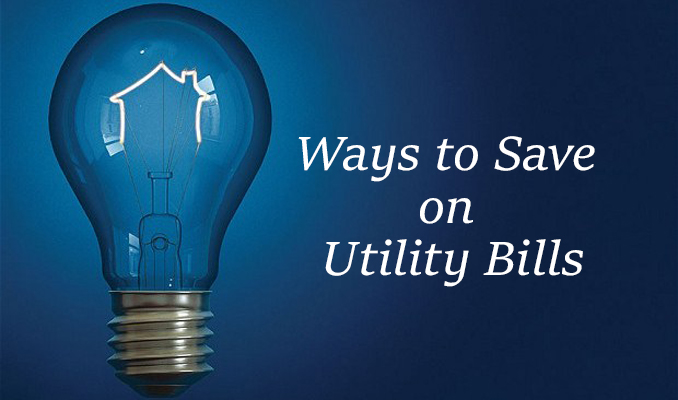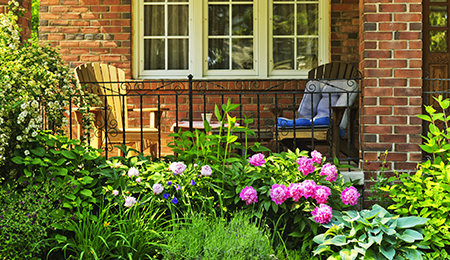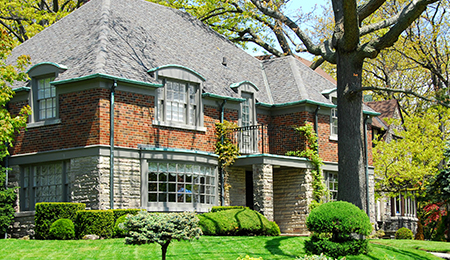
In our eco-conscious (and money-conscious) age, there’s really no excuse for wasting energy at home. There are dozens of extremely easy, small steps you can take right now to minimize your use of energy resources and cut back your bill from the utility company.
But there’s more to energy-optimization than buying a new fridge. To find the most effective energy-saving tactics at all price points, Curbed checked in with Christina Kielich of the U.S. Department of Energy (DOE) and certified home energy auditor Erlend Kimmich.
”There are so many small changes people can make to improve the energy efficiency of their homes, but it all adds up to significantly lower energy bills and a smaller environmental footprint,” Kielich says.
Replace your light bulbs
The typical American household spends 5 to 10 percent of its energy budget on lighting alone, according to the DOE. Incandescent light bulbs might give off a nice homey glow, but only 5 percent of their energy consumption is actually converted into light. Today’s LEDs, on the other hand, are on average 85 percent more efficient than incandescents.
Swapping your incandescents with warm-colored LED bulbs can save you $100 a year on energy costs. According to the DOE, “LEDs are projected to reach over 80 percent of all lighting sales by 2030…This would save Americans $26 billion per year in electricity costs, while cutting America’s lighting electricity use by nearly half.”
Unplug energy vampires
Did you know that even after it’s fully charged, leaving your cell phone plugged in continues to pull power from the grid? Same with your laptop, TV, stereo, game console, and any other electronic device. These unused-but-plugged-in devices draw unnecessary energy that adds up over time.
Get in the habit of unplugging chargers once a device is fully powered-up, and plug your non-battery-powered electronics into power strips that you can turn off when not in use.
Close your windows
You’d think this one would be a no-brainer, but Kimmich says, “You’d be surprised how often people complain about drafts and heat leakages in the winter and you visit and there’s open windows—cords for Christmas lights running out the window or bad seals. In summer, if the accordion wings around the AC don’t fit properly, you might as well put it in the driveway. You’re cooling the outdoors.”
Something as simple as adding weather stripping to doors and windows is a relatively inexpensive way to retain your home’s internal temperature, often paying for itself in energy savings within a year.
Install an automatic thermostat
You can save as much as 10 percent on your annual heating and cooling costs by dialing back your thermostat 7 to 10 degrees Fahrenheit from its normal setting for eight hours a day. Especially if you live in extremely hot or cold climates, installing an automatic thermostat can make a huge difference when it comes to cutting energy use without sacrificing comfort.
Programmable thermostats can cost under $20. Higher-end smart thermostats like the Nest or Ecobee can even learn your preferences and behaviors, automatically turning off your system when you’re out of the house or away on vacation.
Air seal your attic and basement
”If someone’s looking to make a more substantial investment, I would recommend air sealing and insulating the top and the bottom of the building,” Kimmich says. “Especially if the house was built before World War II, that’s where you tend to find the most leakage.”
That’s in part because these are the places most likely to have actual holes cut into the building envelope to make way for pipes and wires. The basement is also where the main frame of the home comes into physical contact with a stone or concrete foundation, creating the potential for more air-leaking gaps.
”Think of your home’s air sealing and insulation like a windbreaker worn over a sweater,” Kimmich explains. “If there’s a rip or you leave the windbreaker unbuttoned, it can’t really help. So we fix the sweater by making the insulation more substantial and we improve that air seal anywhere the indoor space is connected to the outdoor space.”
For lower-lift solutions, the DOE offers instructions for a variety of DIY weatherization techniques, like how to air seal leaks with caulk and how to properly cover attic stairs. Many states offer financial assistance for weatherizing your home, so be sure to check with your state’s weatherization agency before making any large investments.
Get a home energy audit
”The least expensive, best thing someone can do is get a comprehensive, whole-house energy assessment,” Kimmich says. “In most places, you get a subsidized assessment if you make under a certain amount every year, and after a 2-3 hour walk-through, you’ll get a comprehensive list of recommendations.”
SOURCE: archive.curbed.com



